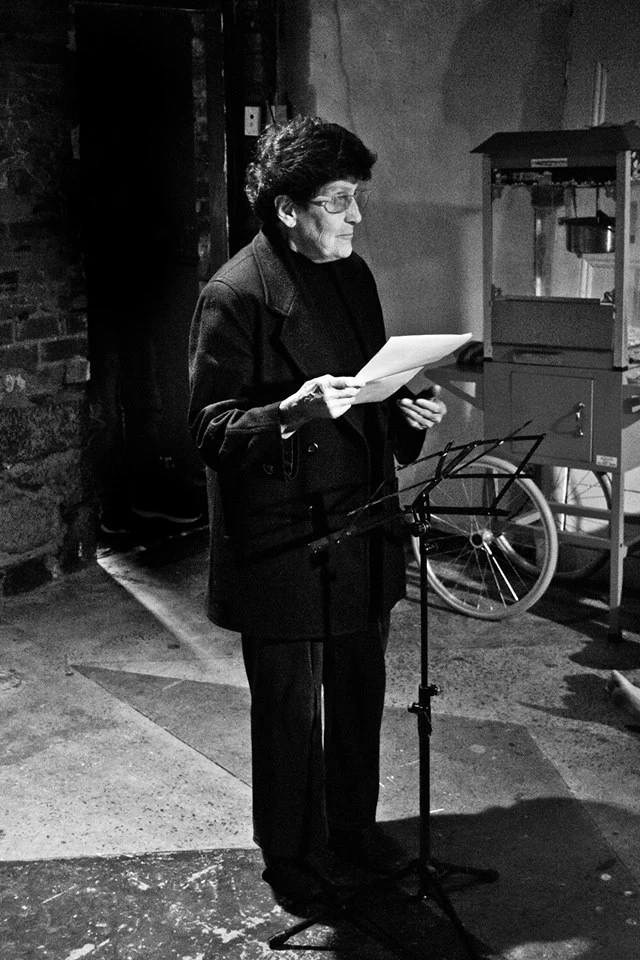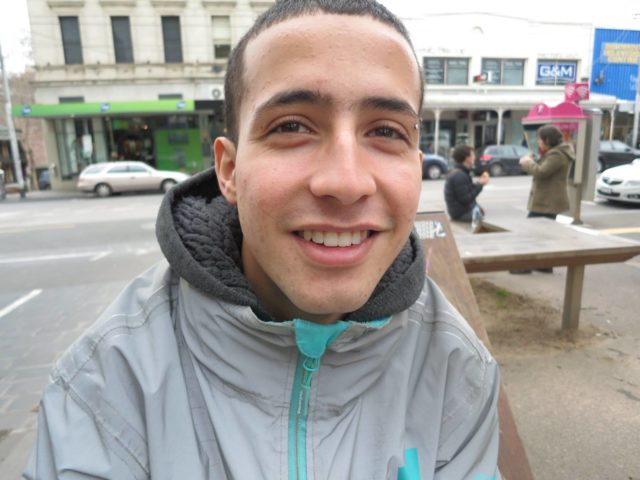
Judith Rodriguez performing at The Owl and Cat Theatre Photo: Brendan Bonsack.
“One of the great shames and sorrows of our time is the situation on Manus Island” Ann Shenfield, PEN Writers in Prison Convenor and poet said.
Ann is one of many poets that perform at Melbourne’s burgeoning and diverse poetry scene. It is also a hub for activism, particularly for the current crisis on Manus Island.
“I am angry about Australia’s continued non-compliance with its U.N. Charter obligations to asylum-seekers. I am ashamed of the government’s bribery of other nations to host detention camps for which Australia is totally responsible despite its lies on this subject” PEN Melbourne Committee member and poet Judith Rodriguez said.

Judith cites that the death of Reza Barati (a “death by medical neglect”) countless suicides, abuse and “illegal detention” as an absolute tragedy. Photo: Brendan Bonsack
Brendan Bonsack, a poet and photographer, currently runs “Melbourne Spoken Word” at 3CR Community Radio Station. He believes the situation at Manus Island demonstrates the xenophobia running through Australian society.
“How far is my government prepared to take this calculated cruelty, and if I let them get away with it now, couldn’t it just as easily happen to me?” Brendan said.
Poetry is an effective medium for activism because it strikes an emotional chord that immediately provokes intense reflection and critical thought.

“Poetry is about connecting with the audience on a human level and hopefully evoking something from them” Sharifa Tartoussi, host of Griffinspeak and poet, said. Photo: Brendan Bonsack.
“Poetry promotes human connection, and a lot of activism is essentially an appeal to empathy, so poetry is ideal tool in an activist’s arsenal” Brendan said.
At its core poetry is simple and lies in a tradition used by civilizations for years. Poetry has a primal and familiar resonance.
“Poetry is a storytelling medium” Sharifa said.
“It is brief but memorable” Judith said.
Poetry has yet to attract legal repercussions or media backlash.
“Poets try to find the kernel of truth behind circumstances. One could add that poems, rarely, in this country, attract charges e.g. of defamation” Judith said.
Yes, poetry is evocative but it can also be a coping mechanism for bystanders that feel hopeless and helpless.
“It is a kind of counter-narrative, so, writing through a lens of kindness, or love, perhaps as a reassurance to myself that these people are still alive” Brendan said.
Moreover, poetry can be easily and quickly distributed, be it, through physical spaces, online spaces or traditional performances.
“A poem can be read anywhere, posted online, pasted on a wall, written on a pavement, flown on a banner, stuffed into the letterbox of your local MP” Brendan said.
Indeed, many poets have personally experienced an audience’s physical reaction to their poetry.
Sharifa, Judith and Brendan say that many audience members have told them about their emotional response to a performance.
“The audiences will often vibe off of you when they realise that you are authentic” Sharifa said.
“Audiences generally express agreement, sometimes enthusiasm. And people tell you later they remember a reading of THAT poem” Judith said.
To hear the poets of Yarra rally against the crisis at Manus Island, tune into Melbourne Spoken Word at 3CR on Thursday mornings 9.00am, 855 AM on your radio. Alternatively, these sessions can be streamed at http://3cr.org.au. Check the Melbourne Spoken Word website for more details and information on other poetry events http://melbournespokenword.com/events/






















